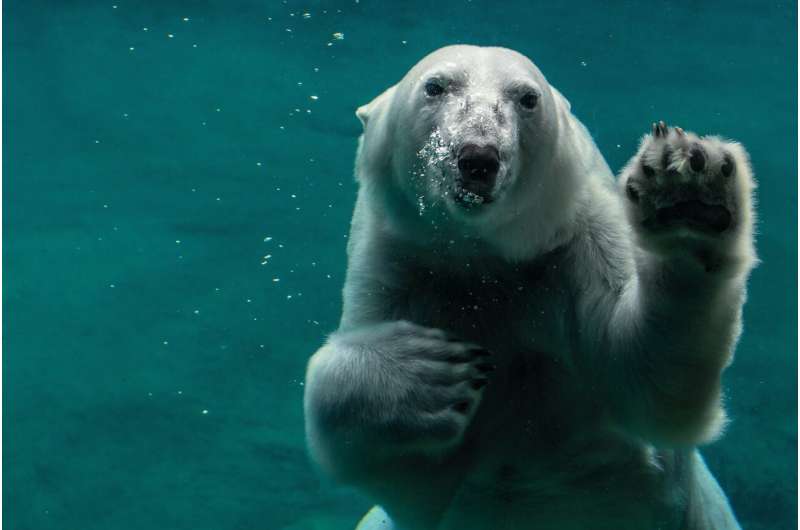Social factors may determine how human-like we think animals are

Sadie Harley
scientific editor

Robert Egan
associate editor

From depressed polar bears to charismatic pandas, conservationists have used anthropomorphism, or the practice of attributing human qualities to non-human subjects, to garner public support for conservation efforts.
In a new study in iScience, scientists tease apart some of the social factors that influence whether people view animals similarly to humans. The researchers found that factors such as social integration, urban living, formal education, and religion can affect an individual's tendency to assign human characteristics to animals. This in turn may affect their willingness to engage with conservation programs.
"Unfortunately, anthropomorphism significantly influences conservation efforts," says author Federica Amici of Leipzig University. "Species that appear more human-like or exhibit human-like behaviors usually tend to receive more attention, funding, and public support. This preference can overshadow the ecological importance of less charismatic species, undermining broader conservation goals."
To understand the personal factors that may influence an individual's tendency to anthropomorphize, the research team conducted a survey of 741 adults from Brazil, Indonesia, Mexico, Malaysia, and Spain.
The questionnaire focused on participants' upbringing as well as on their perceptions about animals' physical similarity to humans and their beliefs about animals' capacity for emotion, consciousness, and free will. The survey found that socially isolated people more often associate animals with human emotions and physical similarity than their more socially connected counterparts.
"People who feel lonely or aren't well connected to others often try to meet their need for social connection by seeing human-like qualities in animals or other non-human things," says Amici.
"For example, there is literature showing that individuals who are chronically lonely are more likely to treat their pets as if they have human thoughts and feelings than those who have strong social ties."

Those with more "urban" experiences—such as having a pet, visiting zoos, or consuming media with animals—had the strongest trend toward anthropomorphism across the survey. These participants were more likely to assign consciousness, emotions, and intentionality to animals than those with fewer of these interactions. In contrast, those with greater formal education were less likely to think animals had autonomy.
Religious upbringing also had an impact, with participants of monotheistic faiths like Islam and Christianity being less likely to ascribe consciousness or free will to animals in comparison to participants from religions such as Buddhism and Hinduism. Agnostics and atheists also gave less free will to animals on average, with a score comparable to those of Christian faith.
"While we know that religious systems provide comprehensive sets of values, norms, and beliefs that shape how people relate to nature and animals, I was struck by the clear difference between monotheistic and non-monotheistic religions in terms of anthropomorphic tendencies," says Amici.
"Non-monotheistic religions appear to contribute more strongly to envisioning a space of coexistence between humans and other species."
Taken together, these results help identify communities where attributing human traits to animals may enhance conservation strategies. However, Amici notes that identifying the underpinnings of anthropomorphism should not be the primary aim.
"I think anthropomorphizing species can be an effective approach, but it should be used with caution," says Amici.
"This could be counterbalanced by emphasizing other aspects, such as the species' crucial ecological role. Whatever approach conservationists take, I believe it is essential to remain aware of the many cognitive and emotional biases that shape human perceptions of nature and other animals."
The researchers noted that while the study captures larger trends, the results are not representative of the full breadth of people's views and experiences surrounding anthropomorphism.
More information: Experience with animals, religion and social integration predict anthropomorphism across five countries, iScience (2025). .
Journal information: iScience
Provided by Cell Press



















